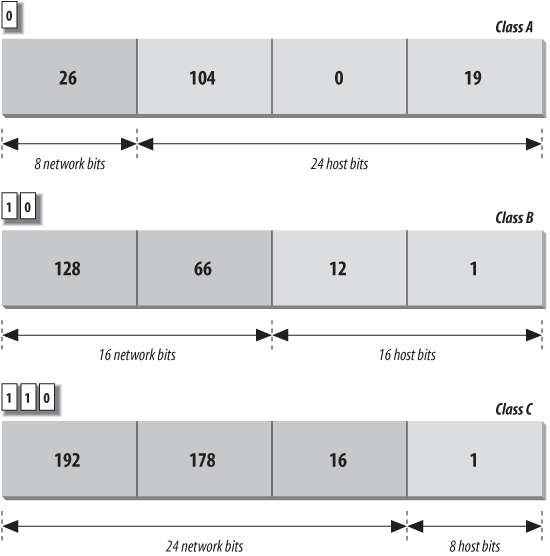IP Addresses
The IP (Internet protocol) address is a binary number that differentiates your machine from all others on the network. Each machine on the Internet must have a unique IP address. The most common form of IP address used currently (IPv4) uses a 32-bit binary address. An IPv4 address contains two parts: a network part and a host part. The number of address bits used to identify the network and host differ according to the class of the address. There are three main address classes: A, B, and C (see Figure 2-2). The leftmost bits indicate what class each address is.

Figure 2-2. IP address structure
A standard called Classless Inter-Domain Routing (CIDR, or supernetting) extends the class system’s idea of using initial bits to identify where packets should be routed. Under CIDR, a new domain can be created with any number of fixed leftmost bits (not just a multiple of eight). A CIDR address looks like a regular IPv4 address followed by a slash and a number indicating the number of network bits. For example: 192.168.32.1/24 or 128.66.128.1/17. Virtually all Internet gateway hosts now use CIDR.
IPv6, a newer standard, changes the method of addressing and increases the number of fields. An IPv6 address is 128 bits. Part of an IPv6 address is based on the Media Access Control (MAC) address of the network interface. The MAC address is unique for each network interface. When written, ...
Get Linux in a Nutshell, 6th Edition now with the O’Reilly learning platform.
O’Reilly members experience books, live events, courses curated by job role, and more from O’Reilly and nearly 200 top publishers.

